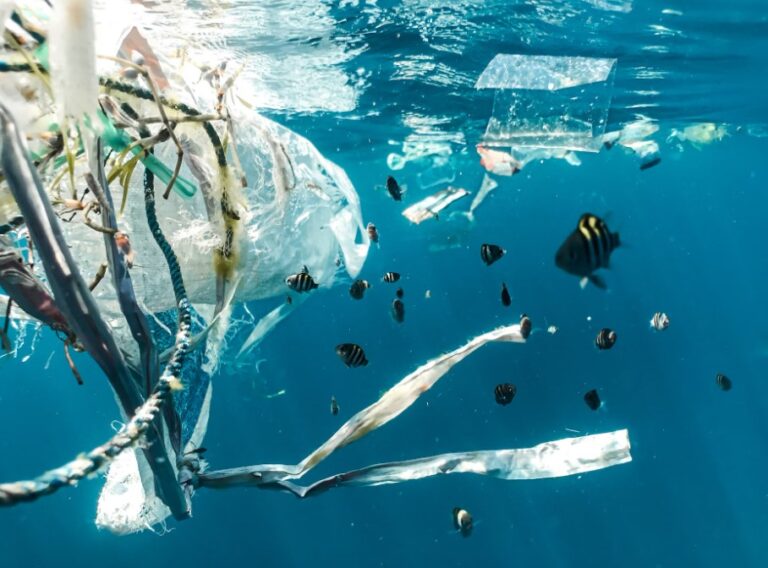The ubiquitous plastic has become an essential component of contemporary life. The versatility and durability of this material have made it a household staple, appearing in everything from packaging to everyday products.
Nonetheless, the significance of plastic trash to the environment is immense. The yearly entry of millions of tons of plastic garbage into our ecosystems has made plastic pollution a significant environmental concern.
Developing efficient waste management solutions requires a thorough understanding of the rates at which different types of plastic decompose.
In this article, we explore how long it takes for plastic to decompose, why it is so difficult for plastic to degrade, and how to keep it out of landfills and oceans.
Table of Contents
How long does it take for each plastic material to decompose?
Polymers made from petrochemicals are the raw material for plastic, which is not a naturally occurring substance. Plastic is not biodegradable like paper or organic food waste. The opposite is true; when it comes into contact with sunshine, it literally breaks down into its component parts.
Although this method does reduce the plastic to microscopic particles (microplastics), it does not get rid of the substance altogether. Different chemical structures of polymers give rise to plastics with varying rates of breakdown.
A popular packaging plastic, polyethylene, can stay in the environment for hundreds of years. Polystyrene, on the other hand, is present in many disposable products and can remain in the environment for thousands of years before decomposing.
In order to tackle the growing environmental catastrophe, it is essential to understand how different forms of plastic break down over time. How quickly plastic breaks down depends on a number of things, such as the kind of plastic, the surrounding environment, and the presence or absence of microbes.
Read also: Microplastics: why are they a major threat to the environment and humans
Why plastics are so difficult to degrade
The synthetic nature of plastics, which makes them durable and resistant to wear and tear, is the root cause of their indestructibility. Plastics have strong chemical connections that make them resistant to the elements that speed up the breakdown process. The carbon bonds in plastic are different from the chemical connections in nature, which makes breaking them down more difficult and energy-intensive.
Furthermore, plastics are typically unaffected by the degradation-promoting elements of biological materials, such as sunshine, moisture, and oxygen. This innate resilience is a major obstacle to the effective breakdown of plastic trash.
On top of that, when plastic breaks down, it can release harmful substances into the soil, which creates even more problems that scientists need to solve.
How biodegradable plastics decompose
One promising alternative to conventional plastics that could lessen their negative effects on the environment is biodegradable plastics. The goal of developing biodegradable plastics was to make them more easily broken down by natural processes, as opposed to traditional plastics that can stay in the environment for centuries or even centuries.
Cornflour, sugarcane, and other plant-based polymers are common ingredients in these cutting-edge technologies. The capacity to decompose into water, carbon dioxide, and biomass as a result of microbial degradation is the defining characteristic. The term for this procedure is biodegradation.
Microbes such as fungi and bacteria facilitate the breakdown of biodegradable plastics by producing enzymes that attack and neutralize the plastic’s molecular bonds. As a consequence, the particles are reduced in size and eventually absorbed by the environment, eliminating any trace that may have been there before.
Particular conditions, such as those affecting temperature, moisture, and the presence of particular bacteria, are required for biodegradable polymers to carry out their intended functions. When subjected to the appropriate conditions, biodegradable polymers have the potential to decompose rapidly in industrial composting facilities, typically disintegrating within a few months. However, the process may take longer in less optimal environments, such as landfills or the ocean, where the conditions are less favorable.
How to keep plastics waste out of oceans and landfills
In order to tackle the issue of plastic pollution, we need to take preemptive measures to cut down on the quantity of rubbish made of plastic that accumulates in landfills and ends up in the ocean. In order to reduce the demand for new production while simultaneously diverting plastics away from landfills, it is essential to introduce and encourage recycling schemes.
By supporting alternatives that are biodegradable and providing our support to efforts to reduce garbage, we can help diminish the impact that plastic has on the environment. This is more than just lowering the amount of plastic that we use. In order to prevent plastic from entering fragile ecosystems, it is essential to engage in responsible disposal practices, such as avoiding littering and bringing the waste to the appropriate locations for recycling.
Read also: Leader countries in plastic ban: the example of Rwanda












